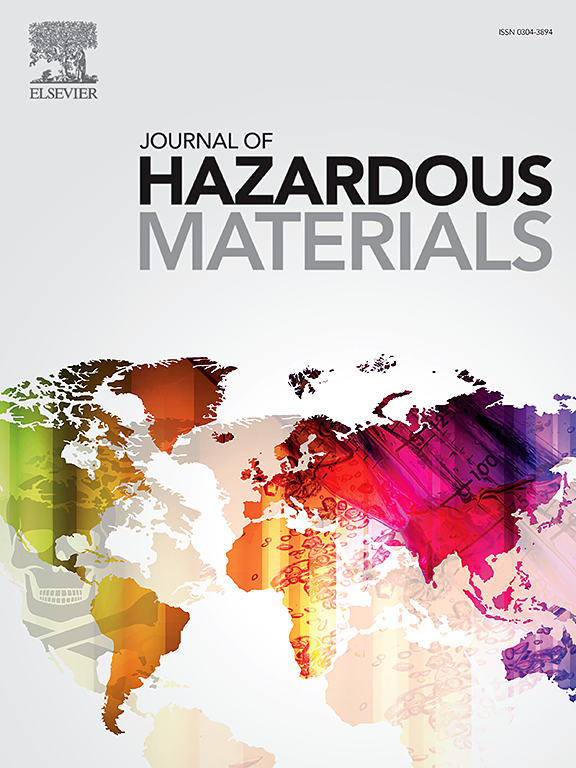完全去除有毒除草剂和结构洞察力的异质分子聚集体
IF 12.2
1区 环境科学与生态学
Q1 ENGINEERING, ENVIRONMENTAL
引用次数: 0
摘要
除草剂,尤其是百草枯及其类似物,是常用的除草剂。然而,它们的高毒性对人类生命和环境构成了相当大的风险。本文报道了一种用异分子聚集体(HA)包封有毒除草剂的有效方法,该方法可用于治疗毒草中毒。这一新方案基于主-客体化学,涉及到暴力原的协作封装,从而导致单个暴力原及其捕获的有毒物种的瞬时沉淀。ITC、溶液态和固态核磁共振、荧光和单晶x射线晶体学研究表明,透明质酸可以与所有三种干扰素形成高度稳定的配合物。电化学实验表明,包封能显著降低紫外光原的氧化还原电位(无可见峰)。质子核磁共振分析表明,性能远远超过之前的报道,达到100%的紫质去除。进一步的细胞和斑马鱼实验表明,透明质酸包封能显著提高斑马鱼细胞活力,降低斑马鱼死亡率。因此,透明质酸在临床治疗暴力毒素中毒方面具有很大的应用潜力。据我们所知,这是HA在大浓度范围内协同封装和完全去除PQ及其类似物的第一份报告。本文章由计算机程序翻译,如有差异,请以英文原文为准。

Complete removal of toxic herbicides and structural insight by a heteromolecular aggregate
Viologens, especially paraquat (PQ) and its analogs, were commonly used as herbicides. However, their high toxicity poses considerable risks to human life and the environment. In this paper, we report an effective strategy for the encapsulation of toxic herbicides by a heteromolecular aggregate (HA) and could be used for the treatment of viologen poisoning. This new protocol is based on host−guest chemistry and involves the collaborative encapsulation of viologens, which led to instantaneous precipitation with single viologens and their trapped toxic species. ITC, solution-state and solid-state NMR, fluorescence, and single crystal X-ray crystallography studies indicated that the HA could form highly stable complexes with all three viologens. Electrochemical experiments showed that the encapsulation could significantly reduce the redox potentials of viologens (no visible peaks). Proton NMR analyses showed that the performance well exceeded the previous reports, achieving 100% viologen removal. Further studies in cells and zebrafish showed that encapsulation by HA could significantly increase cell viability and decrease the mortality rate of zebrafish. As a result, HA might have great potential application in the clinical treatment of viologens poisoning. To our knowledge, this is the first report of HA for the collaborative encapsulation and complete removal of PQ and its analogs at wide concentration ranges.
求助全文
通过发布文献求助,成功后即可免费获取论文全文。
去求助
来源期刊

Journal of Hazardous Materials
工程技术-工程:环境
CiteScore
25.40
自引率
5.90%
发文量
3059
审稿时长
58 days
期刊介绍:
The Journal of Hazardous Materials serves as a global platform for promoting cutting-edge research in the field of Environmental Science and Engineering. Our publication features a wide range of articles, including full-length research papers, review articles, and perspectives, with the aim of enhancing our understanding of the dangers and risks associated with various materials concerning public health and the environment. It is important to note that the term "environmental contaminants" refers specifically to substances that pose hazardous effects through contamination, while excluding those that do not have such impacts on the environment or human health. Moreover, we emphasize the distinction between wastes and hazardous materials in order to provide further clarity on the scope of the journal. We have a keen interest in exploring specific compounds and microbial agents that have adverse effects on the environment.
 求助内容:
求助内容: 应助结果提醒方式:
应助结果提醒方式:


